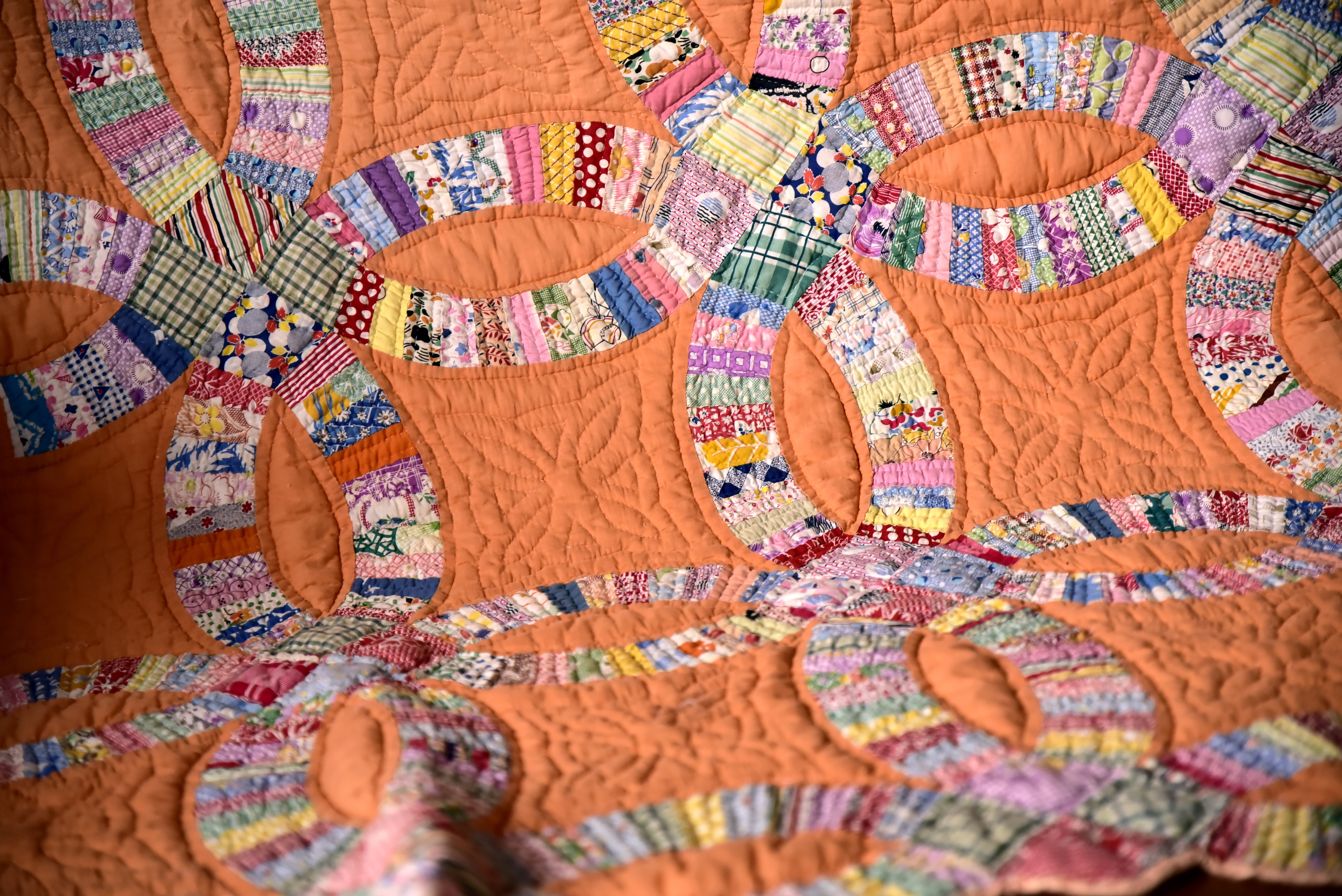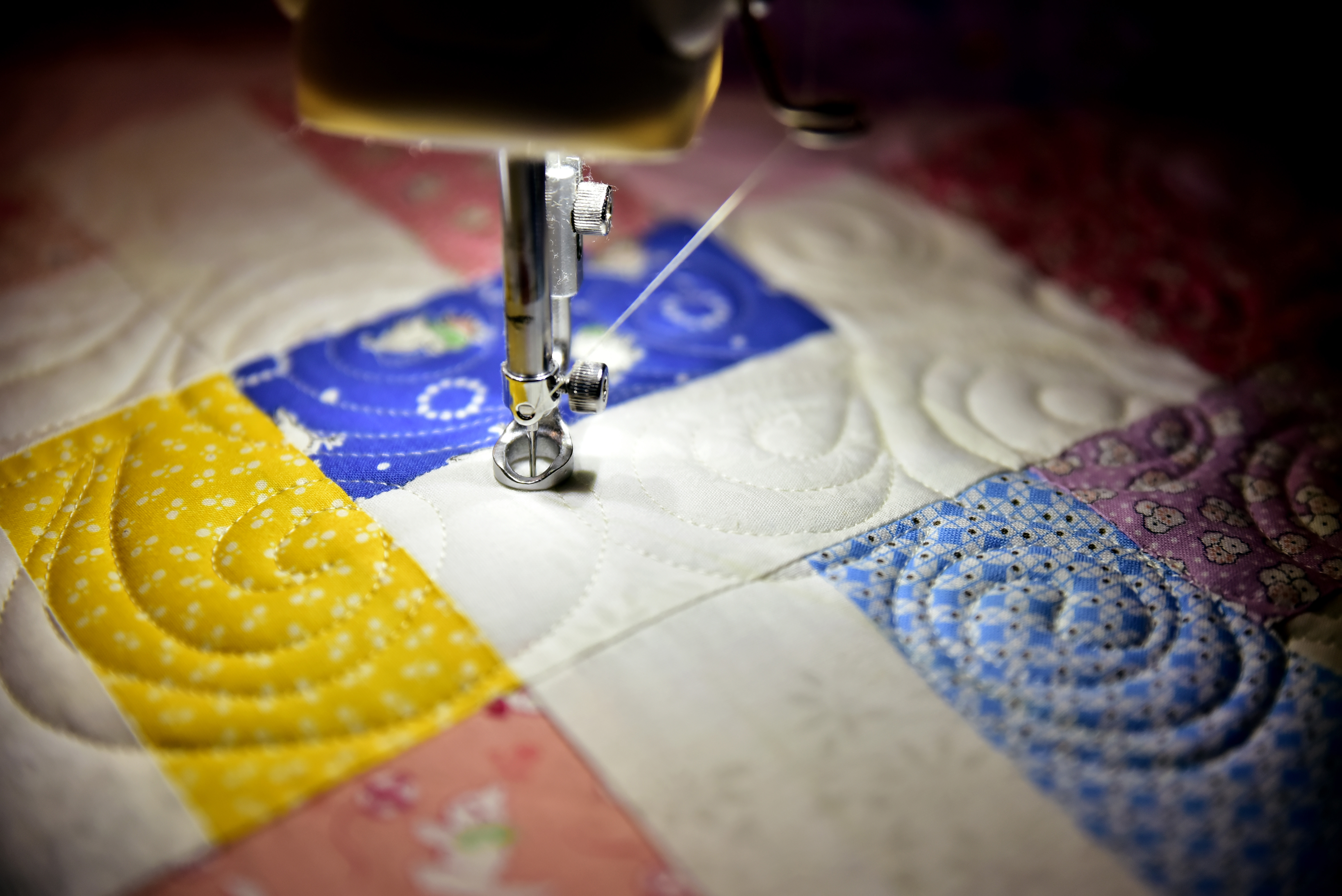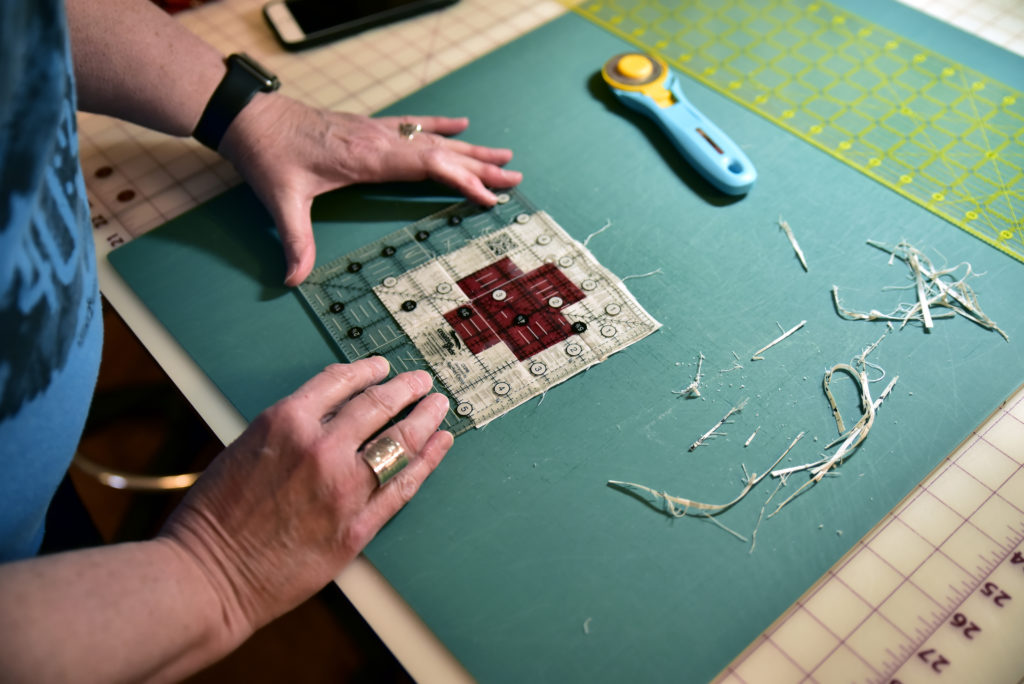The art of quilting
It’s been said that every person has a story to tell, and it turns out that the same may be true for every quilt. Full of color, comfort and love, handmade quilts — and the women who make them — seem to have found a way to preserve a part of past tradition, while leaving a legacy for the future.
Patchwork is a skill that began out of necessity in America during the 1700s. Women repurposed worn out clothing and materials found around their homes for blankets, door coverings and hand-me-down clothing. This style of quilting was functional, materials were limited and times were hard. Oh, if they could only see us now.
Today quilters have an endless supply of fabrics, threads and tools to aid them in the process of choosing material, designing their layout, piecing and binding it all together. Though some women still choose to sew by hand, others crank quilts out with a machine. Some work in a large studio, some in a small closet. Some love to follow a traditional pattern, and some are quilting in ways that are unconventional and modern. The possibilities with today’s quilts are endless, and there are no rules. If you dream it, you can sew it, and it seems that you’ll always have a team of women cheering you on.
No one knows that better than Karla Kiefner, a member of the River Heritage Quilt Guild in Cape Girardeau. Last year she introduced a new idea in quilting when she began using both sides of the material in her patterns.
“Quilters are just excited about quilts,” says Kiefner. “There seems to be an unspoken code that we all encourage each other, regardless of skill level or style.”
And that’s the real story. Women encouraging women. Women sharing life, creating beauty and cultivating relationship. Women need other women, and quilting seems to be a therapeutic outlet that leads to lifelong friendships — friendships that may not have happened without the common bond of quilting.
“Something special happens when women gather together and use their hands to create,” says Carol Gallagher, who is also a member of the Guild.
And create they do. In Southeast Missouri, quilts are being made for organizations such as The Amen Center, Birthright, Lutheran Family Children Services, The Safe House for Women, Community Counseling Center, The Hope House, local nursing homes and military veterans. Quilts are pieced with patience, stitched with love and covered in prayer. Many tell a visible story, and for others the story is hidden within the person who sewed it together. Regardless, these quilts — and the people who make them — are a cherished commodity in our fast-paced world.
Local quilter Nancy Bishop has a long history with quilting.
“My children were all blessed to receive quilts that had been made with embroidered blocks by their Grandma Bishop,” she says. “Then those blocks were made into a quilt by me, and then my mother — their Grandma Steck — hand quilted it.”
Family quilts like these are sure to be treasured as they are passed down from generation to generation.
While some may see quilting as a dying art, much like the tradition of handwritten letters and personal phone calls, others will disagree. As long as there is a new generation ready to learn, there will always be women willing to teach.
So next time you curl up with a quilt at grandma’s house, ask her about it — or better yet, ask her to teach you how to make one. Chances are, she may just have a story to tell, and together you can leave a legacy for the future.
Why do you enjoy quilting?
Nancy Bishop: I enjoy quilting because of the creations you can make from beautiful material or just old scraps that you have saved over the years. I enjoy getting together with friends to sew a quilt. Since 2009, I have been hosting quilt retreats at Shadow Rest Ministries three to four times a year. A group of 12-18 women will come together for three days and nights to sew and piece their quilts, enjoy each other, share meals and devotions, and sew until they drop into bed. Quilting is a wonderful time of fellowship.
Explain to us what quilting is.
Diana Dodd: “Quilting” is often misunderstood. The act of quilting is stitching together — traditionally by hand — a quilt top, batting and backing. But this term is also used to mean “piecing a quilt top,” which can be done by hand or machine.
Why do you love quilting?
Lisa O’Brien: I love it because it is so amazing how you can cut and sew these small pieces of fabric into beau-tiful quilts that can be passed down for generations.
What have you learned from quilting?
Karla Kiefner: When I first started quilting, I thought the process was daunting and didn’t know if I had the patience it took to complete a quilt. What I have found is that there is a wonderful sense of satisfaction with each stage of the process as you watch the quilt come to life before your eyes. Stitching the quilt top together is really just a part of the process. Quilting the layers, trimming, binding, turning the binding by hand … all of it is just as necessary as choosing colors, fabrics, cutting them and piecing them together.














